
|

|
|
Home Site Search Contact Us Subscribe
|
|
|
A Company of Generalists An Interview with Joe Valerio of Valerio Dewalt Train By ArchNewsNow June 23, 2009 Joe Valerio has one of the best-known firms in Chicago, Valerio Dewalt Train Associates. It’s not the largest, and he likes it that way. While the firm does not have a signature look, its projects consistently receive national, regional, and local design awards. Rather than become pigeonholed in a specialty, the firm remains that unusual practice – a company of generalists. Principals are expected to design, manage, and market. Like all architecture practices, the firm has been impacted by the recession but is still winning commissions. We interviewed Joe in his Palo Alto office recently.
ArchNewsNow: Why does your firm have two offices, one in Chicago and one in Palo Alto?
Joe Valerio: We had always done lots of work outside of Chicago, but we were never perceived as being a national firm. It’s hard to say you're a national firm when you only have one office. We realized that the single biggest market in the U.S. was California, and that if you were in California and Chicago, you were a daytrip from anywhere in the country.
ANN: If someone calls and says, "We want you here tomorrow," you could probably do it.
Valerio: Right. Clients on the West Coast don't like hiring East Coast firms because you're always losing two days for a one-hour meeting. If you're in California or Chicago, we could do a one-hour meeting in New York, Houston, Portland, San Francisco. It's a day trip. For example, I think that really helped us in landing eBay in San Jose.
Secondly, what’s fun is working for clients who believe that design has value. We made the decision that we were not going to base our design approach on the conventional wisdom of setting yourself up for a qualification-based selection [QBS] process, because QBS rewards firms that have done the same thing a hundred times. Instead, what we did was ask, "Is it possible to set up a firm that's designed to do things for the first time and convince clients that's a good idea?"
ANN: Really?
Valerio: Yes. For example, we won the design competition for a new dorm at UC San Diego. Many architects approach a project with the idea that they have the answer. Instead of taking that approach, we ask, "What's the question?" Before you decide what the answer is, you work with the client to figure out what the question is. That seems self-evident, but we've discovered that clients don’t hear this much.
ANN: You are giving away your trade secrets!
Valerio: Ah, but it requires investing time. We dive into the client's world, and we try to find out what their life is like.
We've discovered that only when we've had this thorough discussion with a client and we really understand the user do we really understand what best practices are. In other words, if they're a museum, are they competing with somebody else? Or if they are UC San Diego, are they competing for some of the best students in the country?
ANN: What was the question at UC San Diego?
Valerio: The question was, "How do you create a unique student experience that helps attract the very best students from around the country?" The question wasn't, "How do you build a dorm?" The dorm was part of recruiting the best students. It follows that the best students will become extremely successful and contribute back to the university.
ANN: So you have decided to structure the firm so it doesn't become one that gets hired because you've done a dozen dorms, or labs, or museums.
On the surface, it seems like a much harder road to take, because you have to make a complex argument every time. In this day and age, what I see in most firms is specialization. From a marketing communications point of view, you're inventing yourself anew every time.
Valerio: You are correct. It's much more difficult. You have to think a lot harder about every client you are approaching than if you're just following the QBS rules. However, I would argue that generally there are enough clients out there who respond to our very intense approach. We've been able to develop a strong mid-sized practice. We attract very nimble people. This approach allows us to have a much more viable firm, and I think that's important. I think our approach has proven to be far more attractive to the clients who value design.
ANN: How do you determine that they value design when so many projects, public or private, have a drawn-out selection process?
Valerio: It's pretty obvious based on the way the RFP is written whether the company values design. For example, we recently won the University of Chicago Lab School project. In this case, it was not a competition, so there was no design idea up front. Even though we think of ourselves as a design firm, we told them that we are not designing from day one; we’re learning from day one, which is how we think about it.
We discovered that they felt that they had a unique educational pedagogy, and that they wanted an environment that would both express their ideas and support them.
ANN: What was the question there?
Valerio: “How do you communicate that the lab school is one of the preeminent independent schools in the country?” The question was not how you design this pre-K-through-12 school; it was all about the attempt to achieve this end. We explained how we would take them through that process. Someone who has done 100 pre-K-through-12 schools isn’t going to approach it that way. They say, "How many science labs do you want?"
ANN: In part it seems like an alignment of messages. This client perceived themselves as a singular school, and in a way that's very much the message you're giving them about your firm and your approach.
Valerio: When someone really values design, the goal may not be to build a building. Their goal is to achieve something. What we try to do is find out what they are trying to achieve, and then align our process to that goal in a very scientific way. Sure, the design is creative, but it's in no way accidental. There's always a connection between the ultimate goal and our building. The people who value design believe that the right design will help them get there. Like many clients, they are concerned that the architect is more interested in the building as an aesthetic object than in their goal. So we go in and say, "We understand your goal. Here it is, and here's the process you go through, in a very mindful way, to achieve that end."
ANN: And, oh, by the way, it's a building.
Valerio: The building is a means to an end. Sometimes it might not be a building. You have to have the strength to say that.
ANN: Do you use case studies when you're explaining this?
Valerio: Yes. One of the first projects that comes to mind is the Lincoln Park Zoo. They were interviewing us to do a new museum store and a new major food service facility on the historic campus.
We'd interviewed them extensively, and we were on the short list. It was the day before the interview, and I thought, "You know, they're asking the architect to do two buildings, one an adaptive reuse and another a new building. But I don't think it's really about these buildings. I think this is about the visitor experience." I went to the interview, told them that what we wanted to do was to develop and design these two facilities, but that we thought the design had to go beyond two individual buildings – it had to look at the entire historic campus and focus on what they were trying to achieve in terms of that visitor experience. We told them that together we wanted to figure out what their goal was, and then we could design the physical changes to achieve their goal. And, by the way, you get a couple of buildings.
ANN: In an era of specialization, you have chosen to be what you might call an intensive generalist. What does that mean in an economic downturn like the one we’re in?
Valerio: Architects don’t shape the economy. We have to be flexible to respond to changes in the marketplace. I would argue that the best way to do that is to nurture talent. Our firm is not run by accountants. There are a lot of firms that are like that. They remind me of the end of THX 1138, the George Lucas film where the hero gets away because the police are robots: the chase exceeds their budget, and they stop. More than anything, you need dedicated leadership and talent to weather a recession. Of course, it’s hard when you can’t hold on to everybody.
ANN: Tell me how the culture works generally.
Valerio: As the named designer, if you try to control everything, the result is that your intensity will get dissipated and there will be mediocre work. Now that work may never be seen in publications, but it will be out there. There are many, many projects at the office that I don't touch. The client knows that. In other words, I may not go to a lot of interviews. I'll let the young people in the firm go to the interviews, get the work, and then do the work.
ANN: Not go to the interview?
Valerio: If I say to the client, I'm going to design this, then I will design it. But I don’t try to control the ones I don’t design. This allows younger designers to mature and grow and develop their own constituency.
ANN: But do they come to you, or do they sometimes want to keep it to themselves?
Valerio: Sometimes they want to keep it to themselves. I don't say, "You have to show it to me.” If I'm not the lead designer, I will end up stifling a designer if that person says to themselves, "Now, if this was Joe's hand, what would he be drawing?" Another way of saying this is that we are developing around architects who can manage, design, lead, and market. It’s so old fashioned, it’s new again. |
(click on pictures to enlarge) 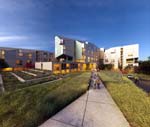 VisualizedConcepts University of California San Diego student housing 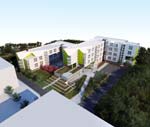 VisualizedConcepts UC San Diego 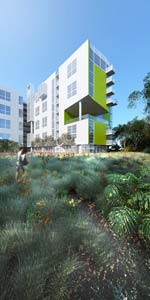 VisualizedConcepts UC San Diego 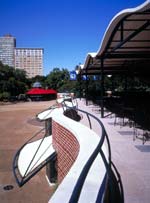 © Barbara Karant/Karant + Associates, Inc. Lincoln Park Zoo, Chicago 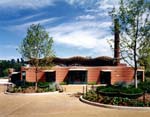 © Barbara Karant/Karant + Associates, Inc. Lincoln Park Zoo 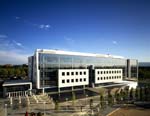 © Jay Graham/Graham Photography eBay Building 17, San Jose, CA 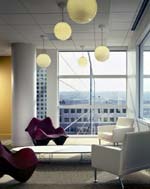 © Steve Hall/Hedrich Blessing eBay Building 17 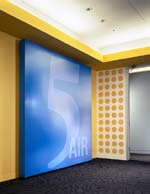 © Steve Hall/Hedrich Blessing eBay Building 17 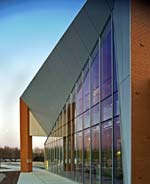 © Justin Maconochie/Maconochie Photography Walsh College, Troy, Michigan, a 30,000-square-foot, LEED Silver classroom/library addition  © Justin Maconochie/Maconochie Photography Walsh College 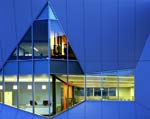 © Justin Maconochie/Maconochie Photography Walsh College 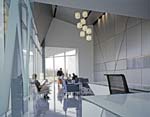 © Justin Maconochie/Maconochie Photography Walsh College 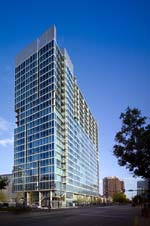 © Steve Hall/Hedrich Blessing 1401 S. State Street, Chicago 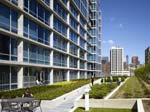 © Steve Hall/Hedrich Blessing 1401 S. State Street 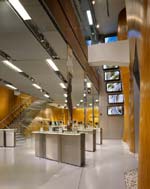 © Steve Hall/Hedrich Blessing Garmin International flagship store, Michigan Avenue, Chicago |
© 2009 ArchNewsNow.com